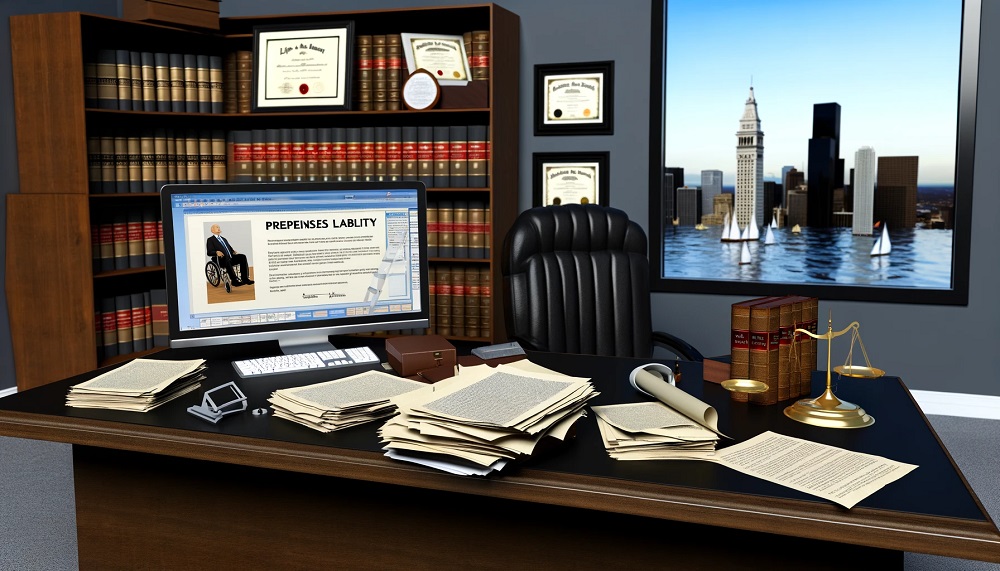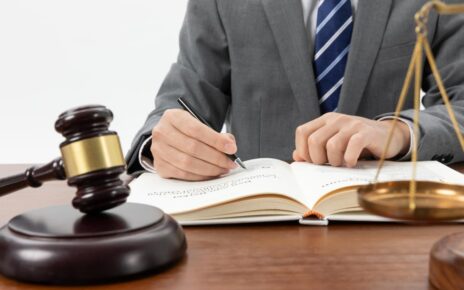Slip and fall accidents can happen anywhere and to anyone, often leading to severe injuries that can impact your life significantly. Understanding the nuances of slip and fall claims is crucial to securing the compensation you deserve. This comprehensive guide, informed by seasoned legal expertise, aims to navigate the complexities of such claims, ensuring you are well-prepared to pursue justice.
Understanding Slip and Fall Accidents
Slip and fall incidents fall under the broader category of premises liability claims. These accidents occur when a person slips, trips, or falls due to a hazardous condition on someone else’s property. Common hazards include wet floors, uneven surfaces, poorly lit areas, and walkway obstacles.
Common Causes of Slip and Fall Accidents:
- Wet or slippery floors without proper signage
- Uneven sidewalks or pavements
- Cluttered or obstructed walkways
- Poor lighting in walk areas
- Loose or torn carpeting
The Legal Framework
To succeed in a slip and fall claim, you must prove that the property owner was negligent in maintaining their premises. Negligence is established by showing that the owner knew or should have known about the hazardous condition and failed to rectify it reasonably.
Critical Elements of a Slip and Fall Claim:
- Duty of Care: Establishing that the property owner owed you a duty to maintain a safe environment.
- Breach of Duty: Demonstrating that the property owner breached this duty through negligence.
- Causation: Linking the breach of duty directly to your accident and injuries.
- Damages: Providing evidence of the physical, emotional, and financial damages you suffered.
Steps to Take After a Slip and Fall Accident
Your actions immediately following a slip and fall accident can significantly impact the outcome of your claim. Here’s what you need to do:
- Seek Medical Attention: Your health is paramount. Additionally, medical records will serve as crucial evidence for your claim.
- Report the Incident: Notify the property owner or manager about the accident. Request a copy of the accident report if available.
- Document Everything: Take photos of the accident scene and your injuries. Collect contact information from witnesses.
- Avoid Giving Statements: Be cautious about what you say to the property owner or insurance companies. Avoid admitting fault or making statements that could be used against you.
- Consult a Slip and Fall Accident Attorney in San Diego, CA: An experienced attorney can guide you through the legal process, ensuring your rights are protected and maximizing your chances of a favorable outcome.
How to Choose the Right Attorney
Selecting an attorney who is well-versed in slip-and-fall claims is crucial. Look for someone with a proven track record who offers personalized attention and is readily available to address your concerns.
Considerations When Choosing Your Attorney:
- Experience with slip and fall claims
- Understanding of local laws and regulations
- A strong negotiation and courtroom presence
- Positive testimonials from past clients
Maximizing Your Compensation
The compensation you receive will depend on the severity of your injuries, the extent of negligence, and the skill of your legal representation. Damages may include medical expenses, lost wages, pain and suffering. A skilled Car Accident Attorney can assist if your slip and fall accident involves vehicular negligence.
Tips for Maximizing Compensation:
- Keep detailed records of all expenses related to your accident.
- Follow through with all prescribed medical treatments.
- Stay engaged with your attorney, providing all necessary information and documentation.
Avoiding Common Pitfalls
Common mistakes undermine many slip-and-fall claims. Avoid these pitfalls to strengthen your case:
- Failing to Document Evidence: Comprehensive evidence is critical to proving negligence.
- Ignoring Medical Advice: Skipping treatments or appointments can hurt your claim.
- Posting on Social Media: Insurance companies may use your posts to dispute your claim.
- Accepting Early Settlement Offers: Consult with your attorney before taking any offers from insurance companies.
Navigating Insurance Negotiations
Dealing with insurance companies is a critical aspect of slip and fall claims. Insurance adjusters are skilled at minimizing payouts, so it’s essential to approach negotiations with a strategy.
Effective Negotiation Strategies:
- Understand Your Claim’s Value: Clearly understand the full extent of your damages, including future medical expenses and non-economic damages like pain and suffering.
- Do Not Rush: Insurance companies may offer a quick settlement to close the case for less than it’s worth. Be patient and consult with your attorney.
- Communicate Through Your Attorney: Let your experienced slip-and-fall attorney handle communications to avoid missteps.
The Role of Evidence in Your Claim
The strength of your slip-and-fall claim largely depends on the quality and quantity of evidence you can present. This evidence establishes the property owner’s negligence and quantifies your damages.
Types of Crucial Evidence:
- Photographs and Videos: Visual proof of the hazardous condition and your injuries can be compelling evidence.
- Witness Statements: Accounts from people who saw the incident or the dangerous situation can support your claim.
- Medical Records: These documents are essential to prove the extent of your injuries and their connection to the accident.
- Expert Testimony: Sometimes, testimony from medical experts or accident reconstruction specialists can bolster your claim.
Legal Proceedings and Timeline
The legal process for slip and fall claims can be lengthy, involving several stages from the initial consultation to potential courtroom proceedings.
Typical Legal Process:
- Initial Consultation: Meeting with a Truck Accident Lawyer in San Diego, CA to discuss your case’s merits.
- Investigation: Your attorney will gather evidence, interview witnesses, and possibly consult with experts.
- Filing a Claim: The formal legal process begins with filing a claim against the property owner or their insurance company.
- Negotiations: Before going to trial, there’s often an attempt to settle the case through negotiations.
- Problem: If a settlement isn’t reached, the patient may go to trial, where a judge or jury will decide the outcome.
Understanding the Timeline:
The duration of slip and fall claims can vary greatly depending on the case’s complexity, the parties’ willingness to settle, and court schedules. Your attorney can guide you on what to expect.
The Importance of Acting Quickly
Timeliness is crucial in slip-and-fall cases due to statutes of limitations, which set deadlines for filing a lawsuit. These deadlines vary by state, so it’s essential to consult with a local attorney to ensure your claim is filed on time.
Final Thoughts
Slip and fall accidents can significantly affect your health, finances, and overall well-being. However, you can navigate the claims process effectively with the right approach and legal support. Remember, each slip and fall incident is unique, requiring a tailored legal strategy to achieve the best possible outcome.
Don’t hesitate to seek legal advice if you or someone you know has been involved in a slip-and-fall accident. A Slip and Fall Accident Attorney in San Diego, CA, can offer the expertise and support needed to navigate the complexities of your claim and help you secure the compensation you deserve.
By taking informed steps and leveraging professional legal assistance, you can confidently and clearly move forward from your slip-and-fall accident.








